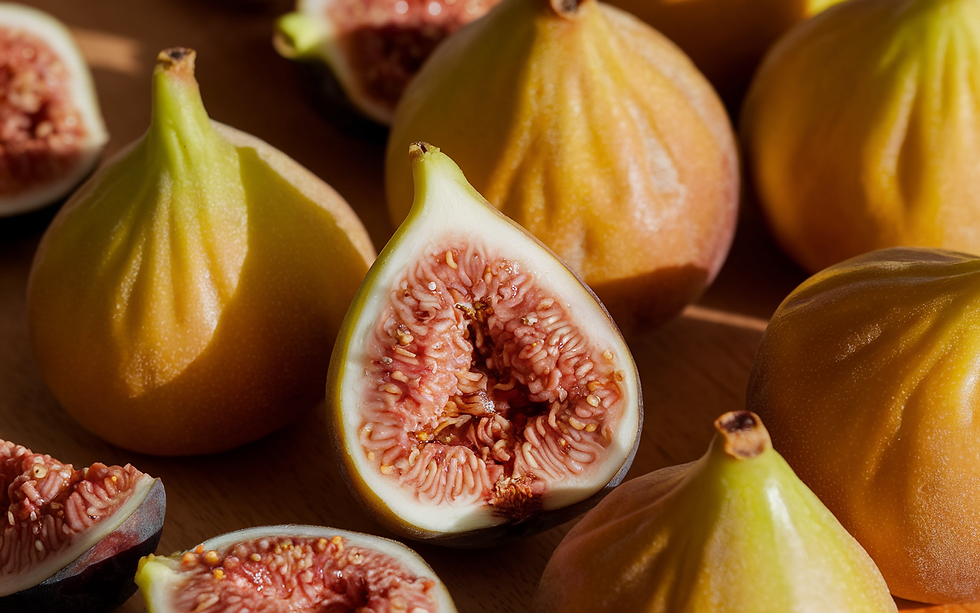From Garden to Jar: Planting and Growing Blackcurrants
- Alla P.
- Jul 5
- 4 min read
There’s something deeply satisfying about picking blackcurrants from your own garden — deep purple clusters hidden beneath soft green leaves, bursting with tart sweetness and packed with vitamin C. These bushes ask for patience in year one, but soon give generously for years to come. With the right setup and a bit of seasonal attention, blackcurrants become one of the most rewarding fruits to grow at home.

Choosing the Right Spot and Variety of Blackcurrants
Blackcurrants thrive in a cool, temperate climate and appreciate a little protection from harsh wind. A spot with full sun or partial shade works well — full sun produces sweeter fruit, but light shade helps reduce stress in hotter zones.
Before planting, it helps to test the soil. They like it slightly acidic to neutral (pH 6.0–6.5), rich in organic matter, and moist but not soggy. Clay-heavy soils benefit from compost or well-rotted manure dug in a few weeks ahead of planting. Raised beds or ridges are a good solution where drainage is poor.
Popular varieties like the ‘Ben’ series (‘Ben Hope’, ‘Ben Lomond’, ‘Ben Sarek’) are easy to grow, highly productive, and often resistant to mildew and reversion virus. Compact cultivars work well in smaller gardens or containers.
Planting Blackcurrant Bushes
Late autumn through early spring is the best time for planting bare-root bushes. Container-grown plants can go in any time, provided the ground isn’t frozen or waterlogged.
When planting, dig a generous hole — around twice the width of the rootball and just a bit deeper. Unlike most fruit bushes, blackcurrants actually benefit from being planted a couple of inches deeper than they were in the nursery. This encourages multiple stems to shoot up from the base, which leads to more fruit down the line.
Once planted, mulch thickly with compost, leaf mold, or straw to lock in moisture and suppress weeds. Leave a small gap around the base to prevent rot.
Growing Blackcurrants: Watering, Feeding, and Mulching Tips
New plants appreciate regular watering, especially during dry spells. Once established, blackcurrants are fairly low-maintenance — but they’ll always reward attention. From flowering to fruiting, consistent watering (about an inch a week) helps prevent small, shriveled berries.
Each spring, a handful of high-potash organic fertilizer around the base gives them a good start. Liquid seaweed or comfrey feeds in early summer can boost berry size and flavor. Mulching every spring with compost or manure keeps the soil rich and moist.
Pruning Blackcurrants Without the Stress
One of the best tips learned from trial and error: prune during or just after harvest. This avoids confusion later in the dormant season and frees up time in winter. The method is simple — cut about a third of the oldest, darkest stems right down to the base to encourage fresh growth. The goal is to keep a mix of 1-, 2-, and 3-year-old stems in an open, goblet-like shape that lets air and light in.
Young plants can be pruned hard in the first year after planting — this sets up a strong framework early.
Keeping Birds and Pests Away From Your Blackcurrants
Birds love blackcurrants, and netting is essential once berries begin to ripen. Simple fruit cages or floating mesh supported by bamboo canes do the job well.
Pests to watch for: blackcurrant gall mite (tiny but damaging), sawfly caterpillars (quick leaf strippers), and the dreaded reversion virus (leaves look narrow and the bush stops fruiting). Choosing resistant varieties and regularly inspecting plants makes a big difference.
Blackcurrants Harvesting and Storage Tricks
Blackcurrants ripen in midsummer, and it’s best to pick them dry, early in the day, and by the full truss (rather than individual berries). Harvesting a little under-ripe is better than letting them overripen and fall.
For preserving, the best tip is to freeze the whole truss. Once frozen, berries pop off easily, and their antioxidants stay intact for months. They’re fantastic in smoothies, jams, sorbets, or simply stirred into yogurt with a bit of honey.
Propagating More Blackcurrant Bushes (for Free)
Hardwood cuttings taken in late fall or early winter are incredibly reliable. Just snip pencil-thick shoots around 20 cm long, strip the leaves, and plant them in a corner of the garden or in pots of compost mixed with grit. By spring, many will root — creating new bushes for free.
Blackcurrants Common Issues (and What Actually Works)
Frost damage on flowers can delay fruit — fleece helps on early-blooming varieties.
Yellowing leaves might mean nutrient deficiencies or compacted roots. A feed and some forked-in compost usually sorts it.
Powdery mildew is usually a sign of dryness — watering more deeply and mulching can prevent repeat outbreaks.
Blackcurrants Seasonal Care Snapshot
Here’s a quick month-by-month breakdown:
Late Winter: Prune, apply mulch and potash feed
Spring: Water well, feed again as needed, net against birds
Summer: Harvest and prune
Fall: Take cuttings, tidy mulch, feed lightly if needed
Blackcurrants don’t ask for much, but they give a lot. With a little care in the first year and some smart seasonal habits, these bushes can stay productive for over a decade. Whether the plan is jam, syrup, or a freezer full of antioxidant powerhouses — growing blackcurrants is a quiet garden win that just keeps giving.





Comments